Ghost of Tsushima
Let’s explore ancient Japan
And write some haikus
Ghost of Tsushima is an open world, combat action and stealth-based game set in Tsushima during the Mongal invasion in the 13th century.
I recently played a copy of Ghost of Tsushima provided by Sony on the PlayStation 4 and couldn’t get enough of the exploration and virtual tourism that it offers.
For those of us who love to travel to Japan, Ghost of Tsushima couldn’t have come at a better time now that we are all unable to travel.
Offering a complete experience of ancient Japan, including skinny dipping in onsens, writing haikus and praying at shrines, Ghost of Tsushima is a welcome excuse for virtual tourism.
Fans of Akira Kurosawa’s samurai films and lovers of samurai literature will also enjoy Ghost of Tsushima for its tale of honour and duty. And since I missed travelling to Japan for a vacation so much, I happily spent an inordinate amount of time (over 50 hours) hunting down every onsen, shrine, as well as scenic spots in Tsushima for Jin’s selfies, and I’m not even done finding all the collectibles!
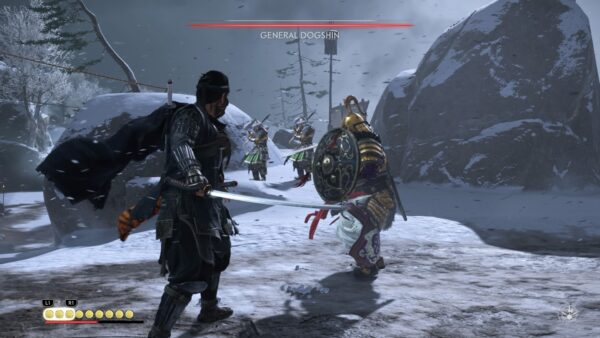
Duty, honour, sacrifice
You play Jin Sakai, a samurai on the island of Tsushima during the Mongol invasion. His uncle, Lord Shimura, was captured by the Mongols after losing a battle with the Mongols.
Rescued by a thief, who eventually became his ally, Jin began his quest to enlist help from notable warriors in Tsushima in order to rescue Lord Shimura, take back his homeland from the Mongols, as well as subdue the bandits who have overrun the land.
It is rather disheartening to see scenes of wanton cruelty and destruction while travelling around Tsushima. Seeing random dead bodies of people who have died cruelly – embedded on stakes, tied to posts, charred and blackened, lying in a pool of blood by the roadside – will fuel the anger in Jin as well as you, the gamer.
But revenge and hatred are not always the best motivators. As Jin tries to help his allies in their own little righteous but at times misguided personal vendettas, there are plenty of good lessons to take away, which make the story more thought provoking than just simply an excuse to hack and slash enemies with cool samurai swords.
The story in Ghost of Tsushima is not straightforward – there is no true right and wrong, and you have to make the decisions for Jin and pay the price for them.
While trying to save Tsushima, Jin will encounter loads of people who will ask for help. Although it’s nice to play a highly respected character and have everyone bow and call you “Sakai sama”, some will take advantage of Jin’s strength, bravery and honour to further their own wicked agendas.
There are times after completing an assigned task that you will feel you’ve not done the right thing. And even as Jin tries to do good, his actions often suffer criticisms from others. There are also times his good intentions have unintended consequences – just like in real life.
Explore, collect, bathe, and write haikus
As an open world game, the Ghost of Tsushima offers a tonne of stuff to collect and places to discover.
In terms of gameplay, Ghost of Tsushima can pass off as an Assassin’s Creed game that is set in historical Japan with many stealth focused missions, enemy territories to be cleared, people to be helped, as well as climbing, jumping and grappling puzzles.
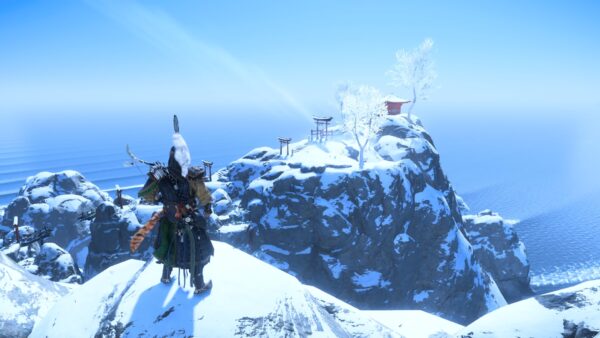
The map is broken up into three main sections corresponding to the three acts in the game, spanning from south, where the game starts, to the north of the island of Tsushima.
Fortunately, all areas can be traversed most of the time except during a critical plot point where previous areas are not accessible to Jin. Once an action is completed at a location, Jin can fast travel around the map, which is very useful.
It helps to complete the side quests that can help Jin increase his skills, abilities, techniques and gear before moving on to the next act, while vanity type collectibles can wait.
In terms of pacing, Ghost of Tsushima has it down pat. Special skills are unlocked at critical junctures of the game just as you are getting comfortable and proficient with what Jin has.
Items like the grappling hook and blowpipe, which Jin will have access to only much later in the game, help to introduce new tactics in Jin’s repertoire and opens up a new dimension to the game at the appropriate timing.
Despite the many scenes of death and destruction, exploration in Tsushima is a truly wondrous and oftentimes rewarding experience.
The multitude of places to be discovered include inaccessible Shinto shrines that require you to solve a jumping and climbing puzzle to access, and bamboo strikes that test your speed and precision in button pressing which will earn you Resolve slots, Haiku spots for Jin to compose haikus and a unique headband.
Then there are Fox Dens with foxes that will lead you to Inari shrines to earn charm slots (capped at a maximum of six) and improve the powers of charms that can boost Jin’s abilities, Pillars of Honour holding unique sword kits for vanity purposes, as well as random head gears and headbands with unique designs and names to be collected.
But the most pleasurable place to discover are onsens for increasing Jin’s health. There, Jin can strip off and soak in the onsen while contemplating on the people in his life and the events so far.
Apart from collecting resources like iron, linen and wood to upgrade weapons and armour, there are also vanity items like flowers for different coloured dyes for changing the appearance of Jin’s armour, as well as other types of plants for creating poisons.
There are also singing crickets in cages that will let Jin learn some new tunes to play on his flute and change the weather. But my favourite collectibles are Mongol artifacts that are usually found in Mongol camps that serve up informative tidbits and let us learn more about the Mongolian history and culture.
One point to note about looting from the slain enemies is that this needs to be done as quickly as possible before completing the final objective during the quest, or else the bodies will be cleared with Japanese efficiency and all the loot will be gone.
I wish the game will offer you the option of leaving the scene or staying back to loot, since there are times that Jin was whisked away somewhere else for a cutscene when I wasn’t done looting.
However, since there isn’t much use of resources after Jin’s weapons and gear are fully upgraded, there is no need to be overly greedy in looting or hoarding resources much later in the game.
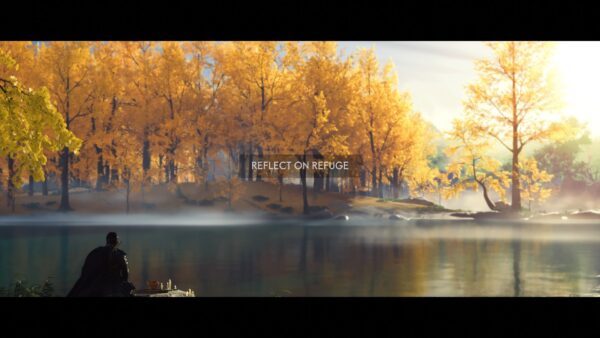
Adding some culture to the whole experience is the exercise of writing haikus. First, you need to find a designated spot for Jin to write haikus – if you are lucky, a Golden Bird of Tsushima will lead you there.
Once Jin settles down on the haiku spot, which is usually a quiet and scenic location, you can look around at the scenery and pick the lines of your choice in five, seven and five syllables to form a three-line haiku.
Although the final reward of a headband is the same no matter which lines you pick, it gives you a moment to admire the scenery and partake in some introspection for Jin’s situation.
Dealing hurt
Jin’s main weapons, like the katana and tanto swords, and half and longbow can be upgraded and beautified but there are no other new versions of these weapons that he will use.
He will get a few different sets of armour, but the game doesn’t really require him to use all of them. I usually choose one of three – a “tank” armour for melee battles and duels, a “sneak” armour for stealth missions, and an “adventure” armour for finding collectibles – so I hardly ever use the other ones.
Jin also has access to stealth weapons like explosive powder bombs, sticky bombs and throwing knives, as well as different types of arrows to damage enemies, which makes the missions very satisfying to play.
There are also missions that will reward you with certain bonuses if you manage to perform certain actions, such as “Kill three enemies with fire” or “Kill five enemies with the half bow”, which force you to try out different tactics.
Combat gets a lot easier when Jin levels up with better combat techniques, equips improved and fully upgraded gear and when he levels up on the various sword fighting stances.
Mastering stances is especially important when fighting different types of enemies who are armed with different weapons – for instance, the Stone stance is more effective against swordsmen while the Wind stance is better against spearmen.
The ability to switch effectively between the stances can make a huge difference when being swarmed by variously armed enemies.
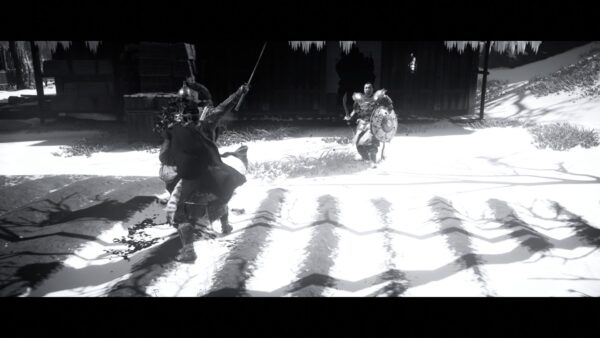
Once you manage to progress sufficiently in the main story, you unlock the very cool Ghost Stance, which is a thrilling yet terrifying mode where Jin can instantly cut down a few enemies in a dramatic, slow motion and monochromatic sequence.
This is punctuated by brilliant red when an enemy is killed. Stealth kills will chalk up the Ghost meter, so a sneaky playing style will go well with this move.
Using special attacks and healing requires what is called Resolve, which can be obtained by killing enemies. Some charms can also help to increase Resolve gains, which are especially critical when facing a strong boss and successful hits are difficult to execute and Resolve is hard to earn.
As a strategy, it helps to fill up Jin’s Resolve with weaker enemies before taking on a drawn-out duel with a Boss.
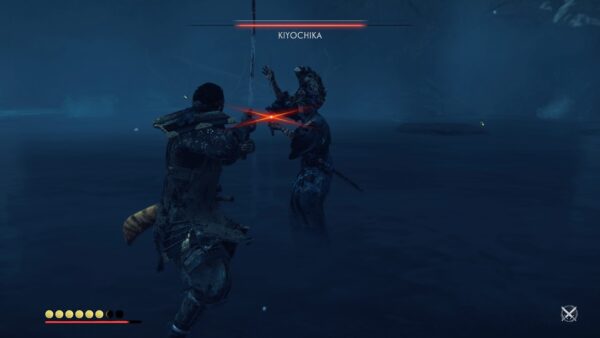
That brings us to the most fun aspect of the game – the one-on-one duels that pit Jin solely against one Boss enemy.
Duels usually take place in a dramatic setting, like a candle-lit cavern, a forest clearing with red leaves raining down, or on a beach with crashing waves.
Stealth tactics that usually get you cheap hits are not enabled in duels, which means that you need to focus on executing precise parries, attacks and dodges in order to win.
Like a proper samurai movie, the art direction and scripting of duels with key characters can get very dramatic and emotional, which sometimes distract me from the battle. This is especially if this is someone I don’t want Jin to kill.
To me, the samurai duels are what makes Ghost of Tsushima stand out from similar games in the genre – I mean, how cool is it to execute kills with a katana and see the enemy fall in dramatic slow motion with blood spilling out artistically?
A time to kill (but not all the time)
More than just focusing on combat and killing, Ghost of Tsushima teaches a lot about respecting nature and animals, which is nice compared to games where you hunt them with impunity.
You can hunt aggressive predators like bears and boars in the wild that will proactively attack you and drop useful hides that can be used to upgrade your quiver. However, other animals like birds, deer and foxes are sacred, so do not hurt them please!
While exploring Tsushima, you can find Fox Dens where you will encounter a cute fox that will lead you to an Inari shrine, and you can even pet the fox afterwards.
And there are also Golden Birds of Tsushima with a distinctive call that will lead you to a place of interest nearby, like an onsen, a haiku spot, a collectible or a side quest.
It’s always worthwhile following the birds although they can sometimes lead you straight into an enemy camp or patrol, or an edge of a cliff, so keep your eyes open to your surroundings!
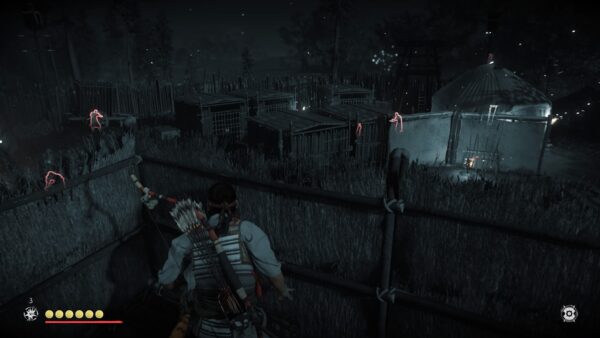
The Mongols also have pets that might need to be disposed of in certain situations, like dogs that can smell Jin and falcons that spot him. They give Jin away during stealth missions.
Enemy horses are harmless but occasionally are caught in an explosive blast or during combat. Jin’s horse fortunately has a strong sense of self preservation and will try to escape from conflict quickly.
What I also like is that the game shows the close bond between Jin and his horse. At the start of the game, I picked a black horse and chose to call it “Kage” (Shadow), and it’s nice to hear Jin calling it Kage when talking to it or urging it on while riding it.
Sometimes, at the end of missions, you can see man and horse taking a nap together or horsing around playfully.
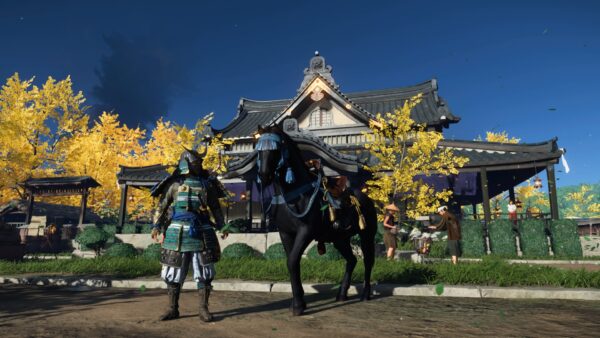
Authentic sight and sound
Tsushima is a wonderful place to explore – despite the painful scenes of destruction, the natural scenery is truly remarkable and extremely Instagrammable.
The game is a visual treat for the eyes and looks so alive, with constantly moving grass, falling leaves and snowflakes blown by the wind against a backdrop of lush green bamboo forests, majestic mountains and waterfalls, glittering golden and flaming red forests, desolate coasts, wide open grasslands and blinding white snow fields.
On the other hand, if you are a fan of the black and white gritty and moody feel of Akira Kurosawa’s films, you can change the display settings so that the game can be played in grainy black and white.
It’s a cute gimmick but not sustainable for hours of gameplay in my opinion, since it messes up Jin’s ability to listen and see the outlines of enemies, which is also in black and white.
Apart from the beautiful scenery, the graphics are also incredibly detailed, showing off trails and puddles of blood, footprints on snow and ripples on water, which add to the game’s realism.
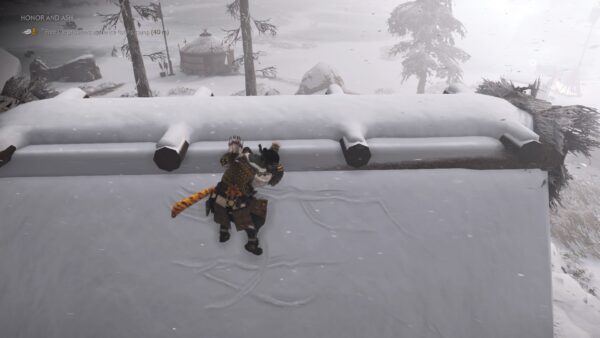
Ghost of Tsushima’s audio and music are also first rate. The background music is suitably heavy with traditional Japanese musical instruments, like the flute, taiko drums and lute, and react in context with the events in the game such as impending danger, a unique collectible, or during a fast-paced battle.
Voice acting is another department that Ghost of Tsushima truly excels in. I cannot really comment on the English audio track since I played through the game in Japanese for authenticity.
I did start the game with the default English audio but somehow, it feels wrong to hear English dialogue in a game like Ghost of Tsushima.
I must say I really enjoyed hearing the Japanese voices even though it meant I was heavily reliant on the English subtitles.
But there are certain parts that are not subtitled. These include non-playing characters (NPCs) chattering or Jin talking to his horse. A pity, since I would have liked to know exactly everything that was said.
Jin’s Japanese voice actor is Kazuya Nakai, whom One Piece fans will find familiar. His deep and ringing voice is a pleasure to the ears, especially when he is daring his adversaries to a standoff, or telling off evil doers.
The game stays in character – no GPS markings here to guide you to your quest, but a friendly guiding wind will point in the right direction to your waypoint when triggered.
And to make the experience more immersive, the sound of the guiding wind comes directly from the Playstation’s DualShock controller, so you can literally feel it in your hands.
Another enjoyable aspect of Ghost of Tsushima is its photo mode packed full of options to get a beautiful shot. This is especially important in a game with so much lovely scenery and virtual tourism potential. You will be tempted to take plenty of picturesque selfies of Jin while exploring Tsushima, as I was.
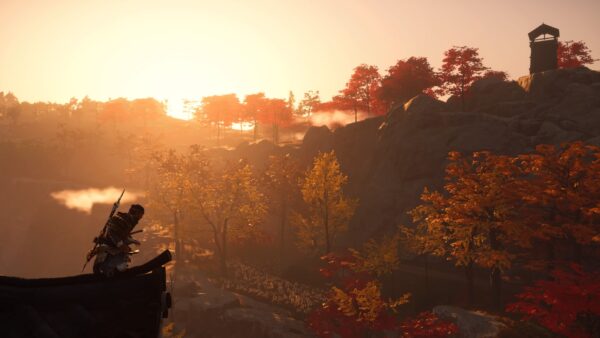
TL;DR
Ghost of Tsushima is a well-developed action adventure game ideal for those who enjoy historic Japan, lovely scenery and Akira Kurosawa’s samurai films.
It’s also for gamers who enjoy stealth and action swordplay, tied in a matured and nuanced story.
Although looting has limited pleasures and loses its meaning after all of Jin’s gear has been upgraded, completist collectors will enjoy the challenge of finding the numerous unique collectibles in the game.
Due to the game’s graphic and bloody violence, it is not suitable for younger gamers or those put off by too much death and gore. Otherwise, it is highly recommended and very satisfying to play until the very end.
Ghost of Tsushima is available from the PlayStation Store at S$79.90, while the Deluxe Edition with additional in-game goodies is available at S$97.90.
With the new free Ghost of Tsushima: Legends update coming soon, in mid-October, the game will be expanded to include online cooperative multiplayer mode with new story missions and survival missions.
Do note, however, a PlayStation Plus subscription is required for playing with others online.







FWIW, the game’s Japanese translator suggested to the developers that the historical “howler” that is a 13th-century warrior composing “haiku” be replaced with waka, but this was rejected because, while few westerners understand haiku (as demonstrated by the awful anti-haiku quality of the poems in the game), even fewer have heard of waka. This is truly something to be lamented, as the waka is the great gift to the world that the Old and Middle Japanese poets have bequeathed to us.